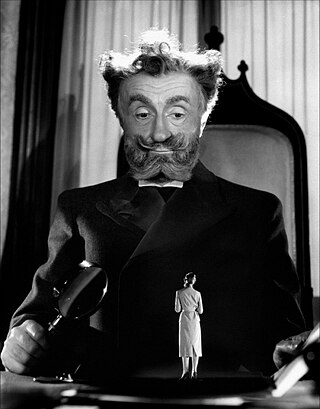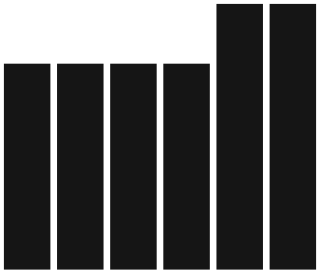
A film crew is a group of people, hired by a production company, for the purpose of producing a film or motion picture. The crew is distinguished from the cast, as the cast are understood to be the actors who appear in front of the camera or provide voices for characters in the film. The crew is also separate from the producers, as the producers are the ones who own a portion of either the film studio or the film's intellectual property rights. A film crew is divided into different departments, each of which specializes in a specific aspect of the production. Film crew positions have evolved over the years, spurred by technological change, but many traditional jobs date from the early 20th century and are common across jurisdictions and filmmaking cultures.

Special effects are illusions or visual tricks used in the theatre, film, television, video game, amusement park and simulator industries to simulate the imagined events in a story or virtual world.

Industrial Light & Magic (ILM) is an American motion picture visual effects company that was founded on May 26, 1975 by George Lucas. It is a division of the film production company Lucasfilm, which Lucas founded, and was created when he began production on the original Star Wars, now the fourth episode of the Skywalker Saga.
Visual effects is the process by which imagery is created or manipulated outside the context of a live-action shot in filmmaking and video production. The integration of live-action footage and other live-action footage or CGI elements to create realistic imagery is called VFX.
Art director is the title for a variety of similar job functions in theater, advertising, marketing, publishing, fashion, film and television, the Internet, and video games.
A technical director (TD) is usually a senior technical person within e.g. a software company, engineering firm, film studio, theatre company or television studio. This person usually has the highest level of skill within a specific technical field.
A creative director is a person who makes high-level creative decisions and, with those decisions, oversees the creation of creative assets such as advertisements, products, events, or logos. Creative director positions are often found within the television production, graphic design, film, music, video game, fashion, advertising, media, or entertainment industries, but may be found in other creative organizations such as web development and software development firms as well.
Television crew positions are derived from those of film crew, but with several differences.
The set decorator is the head of the set decoration department in the film and television industry, responsible for selecting, designing, fabricating, and sourcing the "set dressing" elements of each set in a Feature Film, Television, or New Media episode or commercial, in support of the story and characters of the script. The set decorator is responsible for each décor element inside the sets, from practical lighting, technology, art, furniture, drapery, floor coverings, books, collectables, to exterior furnishings such as satellite dishes, Old West water troughs, streetlamps, traffic lights, garden furniture and sculptures.
Previsualization is the visualizing of scenes or sequences in a movie, prior to filming. It is also a concept in various creative practices, including animation, performing arts, video game design, and still photography. Previsualization is typically used to describe techniques such as storyboarding, either in the form of sketches or in digital technology, in the planning and conceptualization of movie scenes.

Technicolor Creative Studios UK Limited, doing business as The Mill, is a British VFX production company and creative studio headquartered in London, England, with three offices in the United States, three others in Europe and three in Asia. It is owned by Technicolor Creative Studios. The Mill produces real-time visual effects, animation, moving images, design, experiential, and digital projects for the advertising, games, and music industries.

The Animation Workshop is an animation school housed in the former military barracks in Viborg, Denmark. It is a part of VIA University College's School of Business, Technology and Creative Industries. Since the late 1980s, The Animation Workshop has educated and trained animators for the Danish as well as the international animation, computer game and visual effects industry. The Animation Workshop has a strong international network of artists, professionals, companies, funding institutions and partner schools. Teachers and students come from Denmark and the rest of the world, and all classes are conducted in English.
In the context of film and television production, a visual effects supervisor is responsible for achieving the creative aims of the director or producers through the use of visual effects.
A graphics coordinator, GC, or font assist is an individual who works, usually on a television show, as a producer of on-air still and motion graphics. The graphics coordinator decides what content should be displayed on-air — such as on a fullpage or a lower third. The GC should not be confused with the Operator, who usually operates a character generator (CG) and is part of a television crew, or a broadcast designer who physically creates the graphics.

Craig Barron is an American visual effects artist and creative director at Magnopus, a media company that produces visual development and virtual production services for motion pictures, television, museums and multimedia platforms.
Matte World Digital was a visual effects company based in Novato, California that specialized in realistic matte painting effects and digital environments for feature films, television, electronic games and IMAX large-format productions. The company closed in 2012 after 24 years of service in the entertainment industry.

A special effects supervisor, also referred to as a special effects director, special effects coordinator or SFX supervisor, is an individual who works on a commercial, theater, television or film set creating special effects. They are generally the department head who defers to the film's director and/or producers, and who is in charge of the entire special effects team. Special effects include anything that is manually or mechanically manipulated. This may include the use of mechanized props, special effects makeup, props, scenery, scale models, pyrotechnics and atmospheric effects: creating physical wind, rain, fog, snow, clouds etc.
Gregory S. Butler is an Academy Award-winning American visual effects supervisor. He graduated from Suffield High School in 1989 and afterwards entered Hampshire College. Despite his initial plans to study history, a work-study job with the audiovisual equipment in the library made him interested in film production. Butler graduated in 1993 with a major in film, television and theater design. Afterwards he moved to California to work for Industrial Light and Magic for 9 months, where after intern work he managed to become an assistant in the effects department, starting with assistant credits in The Mask and Forrest Gump. Following a job at Rocket Science Games until the company's bankruptcy in 1996, Butler went to Tippett Studio and did effects work in Starship Troopers and My Favorite Martian, rising up to a technical director job, and Cinesite for Practical Magic. While reluctant at the requirement of moving to New Zealand, Butler was convinced by his writer-actor brother to jump at the opportunity of working for Weta Digital in The Lord of the Rings. Among his achievements was working on the creation of Gollum. for which he was awarded a Visual Effects Society Award.
Makuta is an Indian visual effects and animation company based in Santa Clara, CA with branches in Hyderabad, India and Universal City, CA. The company received the National Film Awards in 2010 and 2012 for "Magadheera" and "Eega" respectively. Founded by Pete Draper, Adel Adili and R.C. Kamalakannan in 2010 off the success of their collaboration on SS Rajamouli's Magadheera, the trio brought in private investment and technical advisors from the entertainment and technology industries to their board of directors, such as Dasaradha Gude, Raja Koduri and SS Rajamouli along with long-time collaborator A.V. Dorababu as studio lead. As per agreement, Rajamouli exited from the board of directors after two calendar years during the production of Eega and Kamalakannan personally exited in 2012. Draper, Adili and Dorababu have been spearheading the studio's operations since.
Efraim "Effi" Wizen is an Israeli computer animator and visual effects specialist.






